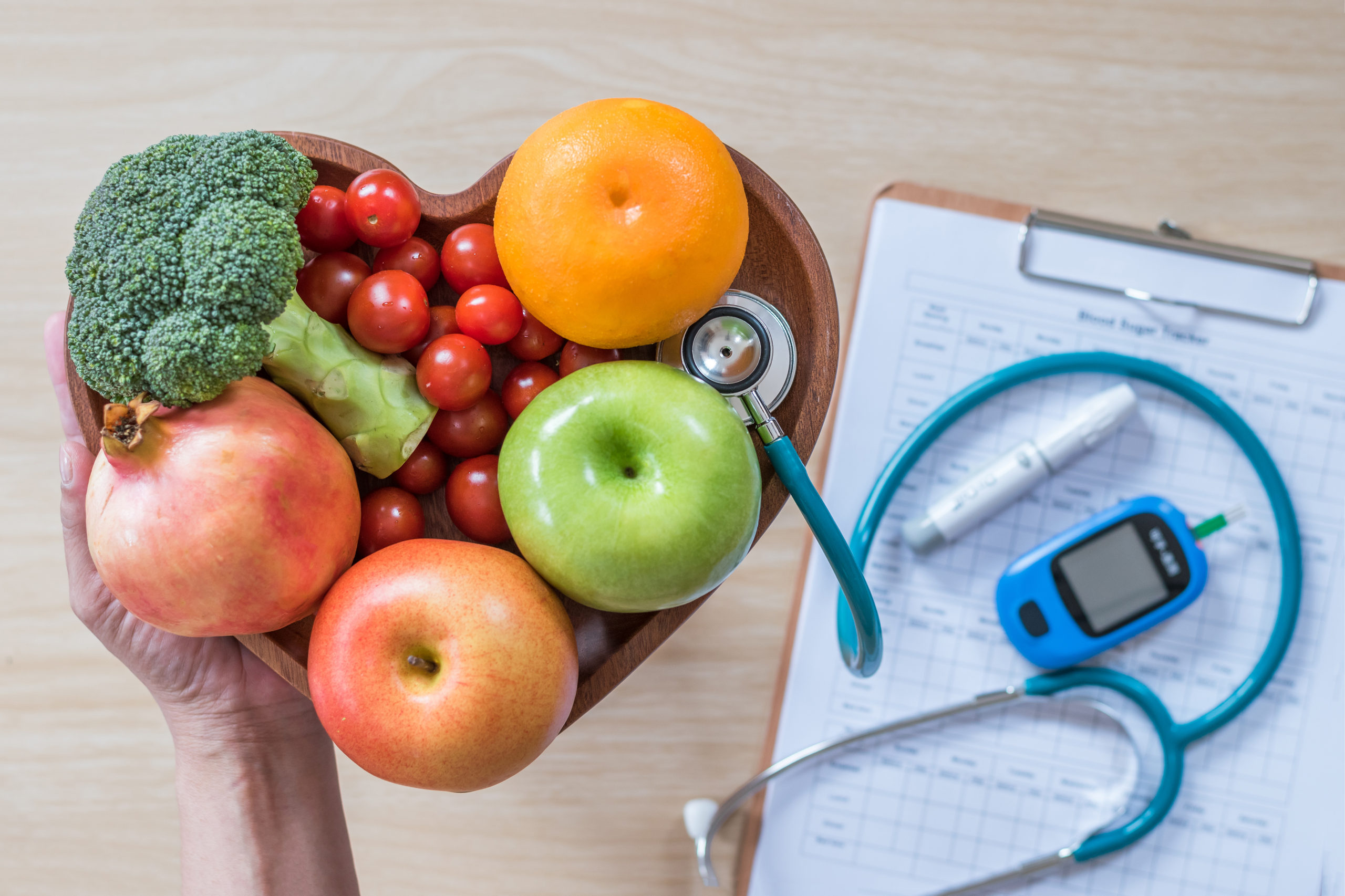Natural Ways to Maintain Your Blood Sugar Levels
Diabetes (or diabetes mellitus), is a metabolic disease that causes high blood sugar. The hormone insulin moves sugar from the blood into your cells to be stored or used for energy. If you have diabetes, your body either doesn’t make enough insulin or can’t effectively use the insulin that it makes.
Besides this, other complications that can arise due to high blood sugar levels include:
- Heart disease, heart attack, or stroke
- Neuropathy (numbness and pain due to nerve damage)
- Kidney problems
- Vision loss
- Hearing loss
- Foot damage
- Bacterial and fungal infections on the skin
- Depression
- Dementia (general term for loss of memory, language, problem-solving, and other thinking abilities)
- Delayed healing of any disease
Hence, it is important to naturally maintain your blood sugar levels in the recommended target range to avoid long-term, or chronic disorders. Maintaining your blood sugar levels is essential for your overall health, immunity, energy and mood.
Normal Blood Sugar Levels
Normal blood sugar levels may vary depending on what blood tests your doctors suggest. Know that the “normal” blood sugar level range for nondiabetics (people who do not have diabetes) is different from that of diabetics.
A blood sugar level less than 140 mg/dL is considered normal. A reading between 140 and 199 mg/dL indicates prediabetes (when your blood sugar level is higher than what it should be but not high enough for you to be diagnosed with diabetes). A reading of more than 200 mg/dL after two hours of eating, indicates diabetes.
Target blood glucose levels for adults with type 1 diabetes, type 2 diabetes, and children with type 1 diabetes are as follows:
- Type 1 diabetes: 90 mg/dL to 126 mg/dL (before meals) and 90 mg/dL to 162 mg/dL (at least 90 minutes after meals)
- Type 2 diabetes: 90 mg/dL to 126 mg/dL (before meals) and under 153 mg/dL (at least 90 minutes after meals)
- Children with Type 1 diabetes: 90 mg/dL to 126 mg/dL (before meals) and 90 mg/dL to 162 mg/dL (at least 90 minutes after meals)
Mg/dL or milligrams per deciliter is a measurement that indicates the amount of a particular substance (such as glucose) in a specific amount of blood.
9 Natural Ways to Maintain Normal Blood Sugar Levels
-
Regular exercise
Exercise can help in maintaining your weight and maintaining proper insulin production. It also ensures that muscles use blood sugar for energy and and increase insulin sensitivity.

- Various forms of exercise that you can do daily include brisk walking, running, cycling, hiking, dancing, swimming, or working out at the gym.
-
Manage carbs in your diet.
Your body breaks down carbs (commonly known as carbohydrates) into glucose, which is then taken up by insulin to provide energy to all the cells of your body. If you intake a lot of carbs through your diet, this process may malfunction, and hence increase the blood glucose levels.
The ADA (American Diabetic Association) recommends counting the calories (a unit to measure the energy content of foods and beverages) before eating because it can help plan meals properly, and aid proper sugar management.
- Carbohydrates have 4 calories per gram. About 50 to 60 percent of your total daily calories should come from carbohydrates.
- Your body changes 100 percent of carbohydrates into glucose.
- Keeping a check on your carbs intake will help maintain normal blood sugar levels. The healthiest carbs that you can include in your daily diet are quinoa, oats, bananas, sweet potatoes, beetroots, oranges, blueberries, and buckwheat. A low carb diet will not only help in preventing sugar spikes but will also improve your overall health in the long run.
-
Plan your meal portion.
This helps in maintaining calorie intake and weight management, thus, reducing the risk of diabetes. Some ways to keep a check include:
- Take smaller plates
- Avoid all-in buffets
- Chew slowly
- Keep a food journal
- Read the labels in food to check for calories
- Increase water-rich foods.Eating water-rich food slows down the digestion of carbs and that of sugar absorption; hence, it promotes a gradual rise in blood sugar levels. It is the easiest of the natural ways to maintain your blood sugar levels.

Foods that are high in water include vegetables (cucumber, tomatoes, spinach, broccoli, sprouts), fruits (oranges, peaches, pineapples, plums, blueberries, melons like watermelon and muskmelon), legumes, and sprouts.
-
Eat foods with high fiber and low sugar index.
Glycemic index (sugar index) measures how you absorb or digest foods, which affects the rate at which blood sugar levels rise. Both the amount and type of carbs determine how a particular food affects blood sugar levels. Eating low-sugar-index foods reduces blood sugar levels, especially in those with diabetes.
Foods with a low sugar index include barley, yogurt, beans, lentils, legumes, wheat pasta, and non-starchy vegetables (vegetables that contain a lower proportion of carbs and calories such as asparagus, bamboo shoots, bean sprouts, broccoli, etc.).
-
Manage your stress.
Needless to say, stress has become the leading cause of all lifestyle disorders. Hormones like glucagon (a hormone secreted by your pancreas that prevents blood sugar levels from falling too low) and cortisol (the primary stress hormone) are secreted when you are under stress, which can cause blood sugar levels to go up.
Studies show how managing stress with meditation, yoga, exercise, laughing, etc., can significantly improve your blood sugar levels. Managing stress is beneficial for your overall health; it can elevate your mood and keep you happy and positive. Other simple things to practice daily to manage your stress are listening to music, taking a walk, enjoying a hobby for at least 20 to 30 minutes, spending time with loved ones, and journaling (writing down your thoughts and feelings).
-
Drink enough water.
Drinking enough water helps in maintaining blood sugar levels. Apart from preventing dehydration (a condition in which there is the excess loss of body fluids), it also helps your kidneys to flush out the excess sugar in your blood, through the urine.

Your kidneys (bean-shaped organs located on either side of the spine, behind your belly) make urine by filtering out wastes and extra water from the blood
Remember that plain water and other non-caloric beverages are the best. Sugar-sweetened drinks only raise your blood glucose levels, promote weight gain, and increase the risk of diabetes.
-
Get enough sleep.
A good night’s sleep is a way of helping your body enhance its healing powers. Sleep is an important part of your everyday routine and getting enough sleep at the right time is the key to better physical and mental health. Poor sleeping habits and lack of rest affect blood sugar levels and insulin sensitivity. These also increase appetite and promote weight gain, which can increase your risk of diabetes.
- Try to eat at least 2 hours before sleeping and have a light walk after dinner.
- Avoid the use of electronic devices at least 1 hour before sleeping, to get a good quality sleep.
- Listening to soft music, practicing meditation or yoga can help you sleep better and deeper.
- Monitor your sugar levels. Measuring and monitoring blood glucose levels help to better manage your sugar levels. Keeping a track of your sugar levels determines whether there is a need to make adjustments in your meals or medications. It also helps in understanding how certain foods react with your body. It is not necessary to monitor your sugar levels daily but a regular check is advisable, especially if you have diabetes.
- You can use portable blood glucose meters, called glucometers, to check your blood sugar levels at home. A lancet (a needle-like device) lightly pricks your skin to obtain a small amount of blood and the meter tells you your current blood sugar level.
- Other devices commonly used are blood glucose monitoring devices, which includes a sensor, transmitter, and monitor.
- Monitor range in price, size, portability, and length of testing time. Each monitor has its own type of test strip which is required to prick your finger to obtain blood.
- With advancements in medical technology, various monitoring devices are being developed that do not require your blood sample, since finger pricking can be a painful experience for many.
The bottom line is that there are ways to lead a happy, healthy, and sugar-free life. Following a happy and healthy lifestyle is the key to keeping your blood sugar levels in check. These are some of the natural ways to maintain your blood sugar levels but you can always find more and incorporate in your daily routine. The earlier the better!
Please talk to your physician before you make any decisions yourself. Its more important if you have some risk factors, other disorders, or any genetic problems, before self-medicating to lower your blood glucose levels.
Disclaimer: This article is written by the Practitioner for informational and educational purposes only. The content presented on this page should not be considered as a substitute for medical expertise. Please “DO NOT SELF-MEDICATE” and seek professional help regarding any health conditions or concerns. We will not be responsible for any act or omission arising from the interpretation of the content present on this page.
